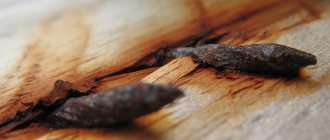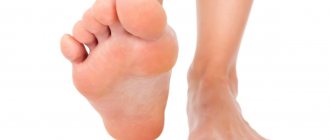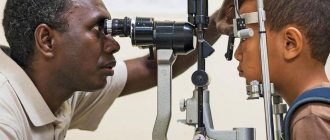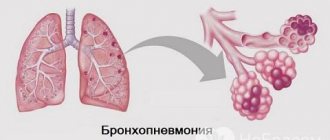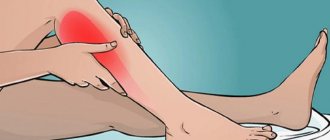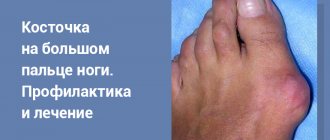Sometimes your calves may cramp during exercise. What to do in such a situation and how to prevent it? You will find out the answer in our article!
Often during training, the calf muscle cramps. Sometimes the pain is so unbearable that you have to stop training to rest and perform recovery exercises. What to do if your calf muscle cramps and how to prevent it?
A cramp is an attack of involuntary muscle contraction, which is accompanied by severe tension. According to statistics, about 75% of people suffer from leg cramps; for some, these are isolated cases, while others suffer from cramps in the calf muscles all the time. If spasms occur, you should immediately consult a doctor to determine the causes and treatment of this condition.
Why do seizures occur?
Cramps occur due to physical exertion, especially if it was sudden and too great, thermal effects (cold water), some people experience cramps even with a sudden change in weather.
Also, seizures can occur when a person undergoes any physiological changes (pregnancy, puberty, menopause). Biological changes cause changes in the levels of many substances in the blood, such as sodium, potassium, and calcium. Convulsions sometimes accompany damage to the nervous system and stress.
A change in diet can also trigger this condition; cramps are often experienced by those who abuse alcohol.
Seizures can be a manifestation of diseases such as spasmophilia, eclampsia, epilepsy, brain trauma and tumors, and inflammation.
Since seizures can be caused by serious illnesses, you should consult a doctor if this occurs.
How to get rid of pain after cramps: first aid
What to do if your calf muscle hurts after a cramp - proponents of acupuncture techniques recommend lightly pinching yourself on the upper lip and gently pulling back the skin. In this place there are points, pressure on which ensures complete relaxation of the spasmed muscle.
Simple exercises will help you quickly get rid of pain after cramps in the legs:
- Stand on the mat with your legs crossed. Shift your body weight to the outer edges of your feet. Stay in this position for 10-15 seconds. Repeat 5-6 times;
- Curl your toes tightly, count to 15, and open your toes for a similar period of time. Repeat 5 times;
- Sit on a high chair, raise your legs slightly and rotate your feet clockwise and then in the opposite direction. 4-5 repetitions are enough.
Methods for treating and preventing leg cramps
To provide first aid to a patient in case of muscle spasms, a number of measures are taken to relieve cramps at home. In the future, the patient will need to undergo a thorough examination to identify the reasons for the onset of a series of convulsive contractions and receive appropriate treatment.
If the patient begins to complain of the development of a cramp, muscle contraction in the lower limb, the victim needs to be laid on a flat horizontal surface or seated. Recommended in cases where it comes to damage to the calf muscles or foot muscles. A simple remedy will relieve excess tension from the muscle and provide the necessary help faster.
Lie down on a flat surface
After the victim has assumed a comfortable horizontal position, an attempt will be required to relieve muscle tension. A number of manual techniques have been developed.
- Take the patient by the foot near the toes, press on them with your hand so that the toes straighten towards the victim’s body. At the same time, the muscles of the calf, cramped, are tensed to the maximum. The patient will experience painful sensations, but after a short time the pain will quickly calm down.
- The patient is able to provide self-help in this way. You will need to sit down with your legs horizontal. Using the fingers of both hands, grasp the toes of the sore leg and pull firmly towards you. With the method described, the pain goes away quickly - in the calves and foot area, if the action is done correctly.
- Athletes often use a proven method to relieve cramps in the lower extremities. Take a sharp object and sharply prick the skin at the site of the developing cramp. A suitable object for manipulation would be a pin or needle.
- If the previous methods do not work, the leg is pulled, or it is not possible to apply actions, it is recommended to thoroughly stretch the spasmodic muscles.
To start the massage, it is useful to do simple stroking and actively rub the skin. The massage ends with intense muscle kneading. At the end of the session, be sure to do strokes. This will lead to muscle calm and relaxation, eliminating pathological tone.
After relieving an attack of convulsive contractions, the patient must rest. A person comes to his senses from intense pain, the muscles of the leg and body rest and relax.
After some time, the patient begins to experience severe aching pain in the place where convulsive contractions of the leg muscles were noted. The pain is similar in nature to the sensations that occur in athletes after training. The appearance is caused by the release of large quantities of lactic acid in the muscles, which, released during muscle contractions, irritates the receptors and contributes to the appearance of pain.
Calf muscle cramps
Often, cramps in the calves occur in the morning when stretching in bed. There may be several reasons for this: lack of calcium, potassium and magnesium, varicose veins, flat feet. In athletes, cramps can occur due to heavy physical exertion and muscle fatigue. Stress, excess weight and a sedentary lifestyle also cause calf muscle cramps.
During training, a cramp may occur for the following reasons:
- along with sweat, water leaves the body, which washes away potassium and calcium;
- insufficient warm-up;
- large volume of training;
- excessive stress on one muscle group.
Possible reasons
In general, doctors separate this particular phenomenon from ordinary seizures. And they even came up with a separate term for it - “myoclonus”. This distinction is due to the fact that the reasons why the calf muscle cramps and the reasons for other types of cramps are fundamentally different. And if tonic-clonic, myoclonic and partial spasms are often signs of quite serious disorders in the functioning of the human body, then when the lower leg is brought together, the causes are often simpler.
It should be noted that very often myoclonus occurs immediately after waking up or during sleep. If you look closely at the sleeping person, you can notice twitching in the area below the knees.
What to do if your calf muscle cramps?
If in the gym you feel that your leg is cramping, your actions should be aimed at improving blood circulation to the cramped muscle. Squeeze the muscle tightly and press into its central part with your index finger for 15-20 seconds. Breathe deeply while doing this.
A spasm in the lower body can be relieved by squeezing firmly (without sharp pain) the middle of the lower lip for 30 seconds.
Also, during a cramp, you can do a massage that will relax the spasmed muscle, improve blood circulation and relieve spasm.
To quickly relieve pain during a spasm, you should stretch the cramped muscle. To do this, you can use the following exercise: stand facing the wall at a distance of one step, feet slightly wider than shoulder width. Place your hands above your head and lean against the wall. Step back in small steps, keeping your feet on the floor. Step back until you feel a stretch in your calf muscles.
There should be no discomfort from stretching, so stop as soon as you start to feel pain and hold in this position for 30 seconds. To make the cramp go away faster, rub and pinch the cramped muscle.
Three ways to relieve a cramp are demonstrated in the following video by Dr. Agapkin.
Exercises for cramps
To prevent cramps from occurring or at least make them less painful, it is recommended to perform exercises to strengthen and stretch the calf muscles. It is useful to walk on your heels, on your toes, and perform heel-to-toe rolls. This exercise is good for relaxing your muscles: stand near a wall and rest your hands on it. Place one leg back and slowly squat on the other, feeling the calf muscle stretch.
It is also useful to do stretching exercises while sitting on the floor. To do this, you can take a towel and use it to hook your leg behind your foot. Pulling the towel towards you will stretch the calf muscle.
Regular calf massage and stretching exercises will help prevent cramps.
Preventing calf muscle cramps
The most important point in preventing cramps and spasms is taking special supplements and reviewing your diet. As noted above, a lack of potassium, magnesium and calcium in the body provokes seizures. All this happens because a person often does not receive the daily dose of these substances from food. For those who suffer from cramps, it is recommended to take dietary supplements or medications with magnesium. Since this element is better absorbed in the presence of calcium, you should also take calcium supplements in combination with vitamin D, which improves its absorption.
The diet should be rich in fresh fruits and herbs. It is worth eating natural sources of calcium, magnesium and potassium every day. Drinking mineral water will also benefit.
- Calcium - milk, cottage cheese, cheese, almonds
- Magnesium - buckwheat porridge, walnuts, legumes
- Potassium - dried apricots, raisins, beets, sunflower seeds, garlic.
pain after a cramp, I ask for advice - Residential
At night I got a severe cramp in my leg, and somehow two waves of pain went away. In the morning, the calf muscle continued to hurt, not severely, but noticeably. This usually happens after a cramp in the leg. But what worries me is that mild but clear pain sensations remained throughout the day and to this very minute, i.e. almost a day. It's as if the muscle is still contracted a little.
What to do? How to relieve such long-term pain after a cramp? And this discomfort. Is it something serious or will it pass?
The discomfort in the leg described above plus the pain after the cramp at times gives the feeling as if the leg or part of it is going numb.
How to treat leg cramps
Here are some treatment tips and videos on Dr. Evdokimenko’s channel:
First, check the instructions for the medications you take daily for several months or years. Remember that many drugs (cholesterol, blood pressure, diuretics, hormones) have a side effect in the form of leg cramps. If your legs are cramping from medications, it is advisable to change the drug.
If the issue is not the side effects of medications, we begin step-by-step treatment of leg cramps:
1st stage of treatment
Magnelis B6, or Magne B6, or Magnesium-plus B6, in tablets. Buy from these drugs the one that will be cheaper. Adults take any of these drugs - 2 tablets 3 times a day, with meals, with a glass of water - for 1 month.
IMPORTANT! These medications should be discontinued immediately if symptoms of excess magnesium in the blood appear, such as: severely slow heart rate (less than 60 per minute), double vision, sudden rush of blood to the skin of the face, headache, severe decrease in blood pressure, nausea, shortness of breath, slurred speech, vomiting, weakness, severe dizziness.
All this happens infrequently when taking magnesium, however, you need to remember it.
2nd stage of treatment
If after a course of treatment with magnesium preparations the cramps in the legs have not stopped, we proceed to injections with B vitamins. Milgamma or Combilipen (which will be cheaper) - buy 10 ampoules, administer 1 ampoule (2 ml) intramuscularly to adults, every other day = that is, 10 injections.
But if 5-6 injections of Milgamma or Combilipen do not make your legs feel better, then we stop giving these injections and then move on to the 3rd stage.
3rd stage of treatment
Calcium preparations, preferably in the form of carbonate (it is believed that it is better absorbed). For example, Complivit calcium D3. Or Calcium D3 - Nycomed. We buy the one that will be cheaper. For adults take:
- Complivit calcium D3 – 1 tablet 2 times a day, preferably with meals. The tablets are chewed or swallowed whole.
- Or use Calcium D3 - Nycomed: take 1 tablet of calcium D3 - Nycomed - forte daily or 2 tablets of regular calcium D3 - Nycomed.
- The course of treatment with calcium preparations is no longer than 1 month. Check contraindications!
4th stage of treatment:
Venotonics: Detralex, Phlebodia, Diosmin, Troxevasin capsules, Troxerutin.
Exercises to treat calf cramps
Certain physical exercises help combat and also prevent calf muscle cramps. Two types of exercises are used for this:
- exercises that are performed when a cramp occurs to relieve spasm and relieve pain;
- exercises that are performed to prevent seizures and reduce the frequency of their occurrence.
If your leg is cramped, massage and muscle stretching will help relieve pain and discomfort. The following exercises are suitable for relieving spasms.
- Straighten your leg, place your foot so that the toe is turned towards the knee (for additional stretching of the cramped muscle, clasp your foot with your hands, pull the toe towards you).
- Walk on your heels for a few minutes.
- If cramps often cramp your leg, you should do exercises three times a day to prevent spasms in the calf muscle.
- Stand against a wall about half a meter away. Lean forward, extend your arms and touch the wall, while keeping your feet on the floor. Maintain this position for a few seconds and relax. Do the exercise for five minutes.
To prevent cramps, a bodybuilder just needs to eat right and take vitamin and mineral supplements. If you take all the necessary measures for prevention, but seizures still occur, be sure to consult a specialist.
Treatment methods
The calf muscle on the leg hurts - this is not a reason to select medications on your own. Many drugs, especially if a person has insufficient blood clotting, can cause bleeding. For example, heparin-based medications, often prescribed for thrombosis.
The therapy chosen by the doctor is always determined by the reasons that caused muscle pain. As a rule, it is always conservative; only in rare cases is surgical intervention required.
Measures taken for treatment:
- drugs are prescribed to improve blood circulation;
- drugs that suppress the inflammatory process are used;
- medications are prescribed to relieve pain and swelling;
- toxins are removed from the body;
- measures are proposed to strengthen the ligamentous apparatus of the muscles.
All drugs are classified according to their intended use and reasons for their use. The correct dose for each patient must be determined by the doctor.
| Drugs | Name | How to use | Prices in rub. |
| Phlebotropic (venotonics) | Detralex | Daily dose – no more than 2 tablets. | 600 |
| Phlebodia 600 | Prescribed by the attending physician, no more than 1 tablet is taken. per day | 500 | |
| Venoruton | 300 mg is divided into 3 doses per day, after 2 weeks, the dose is reduced | 700 | |
| Nonsteroidal (for myositis) | Diclofenac | 2–3 times a day, 25–50 mg, maximum 150 mg per day | 20 |
| Ibuklin | 1–2 tablets each. 2–3 times per day | 100 | |
| Amoxiclav (in case of bacterial infection) | It is taken according to regimens prescribed by the attending physician depending on the complexity of the infection. | 80 | |
| Analgesics | Sedalgin | 1 tab. from one to 3 times a day | 200 |
| Ketanov | Single dose 10 mg, no more than 4 times a day | 100 | |
| Warming ointments | Finalgon | 0.5–1 cm of ointment on the inflamed area | 250 |
| Viprosal | 1-2 tsp. one-time use | 200 | |
| Nise (for severe pain) | Rub in a thin layer up to 4 times a day, no more than 30 g per day | 230 | |
| Corticosteroids | Prednisolone (for muscle dystrophy) | The dose is calculated by the doctor for acute conditions and ordinary | 25 |
| Ortofenoic ointment | Apply a thin layer of 2–4 g of ointment 3 to 4 times a day | 80 |
Often, muscle pain is caused by an uncomfortable position that persists for a long time. During this period, lactic acid accumulates in the muscles, which creates a painful effect. To eliminate this cause, warming ointments and gels are used.
Deficiency of vitamins and microelements: potassium, vitamin D, magnesium leads to cramps in the calf muscles, pain that occurs at night and in the evening. To strengthen muscles, leg exercises and complex vitamin supplements are performed.
Traditional methods
Horse chestnut seeds contain escin, which helps increase the tone of the venous walls, preventing the development of blood clots.
Hawthorn fruits contain caffeic, chlorogenic acids, tannins, and choline, which act as neuroprotectors.
Tinctures are prepared from horse chestnut seeds and hawthorn fruits:
- Fruits and seeds are ground in a blender. For 100 g of seeds add 1 liter of alcohol (70%). Infuse for 7–8 days in a dark place. Take the pre-strained solution daily, 10–12 drops.
Rosehip berries. They regulate lipid metabolism, contain vitamin C, and help strengthen the walls of blood vessels, reducing their permeability and fragility. A drink made from rose hips, after brewing them with boiling water, is drunk daily.
Licorice roots contain bioflavonoids that relieve swelling and inflammation:
- Fry 2 tsp. chopped root, pour 2 cups of boiling water to infuse. After 8 hours the solution is ready for use. Take the strained infusion 30 drops daily.
The calf muscle on the leg hurts, therefore, you can do a massage, but you should take into account that there are no injuries, wounds, or varicose veins on the leg.
For massage, natural base oils are used that do not clog skin pores:
- hemp;
- grape seeds;
- almond;
- jojoba.
You can add a few drops of aromatic essential oils to the base oil.
Other methods
Damage to peripheral nerves and decreased muscle strength can be restored using physiotherapy:
- Electrotherapy. Direct and pulsed current is used as a treatment method. Methods used:
- galvanization, carried out locally;
- electrophoresis, with the use of drugs;
- darsonvalization, improves blood circulation and saturates tissues with oxygen;
- electrical stimulation to support muscle motor activity.
- Magnetotherapy. Promotes restoration of nervous tissue, reduces swelling, helps increase the supply of nutrients.
- Balneotherapy. Mud therapy combined with galvanization is widely used.
- Physiotherapy. Restorative techniques play a big role in neuropathy.
- Medical massage. A course of 8–10 procedures is carried out.
It is often suggested to prick the leg with a needle to create a stronger pain sensation “to switch” the nervous system. You can also “beat” a cramped muscle with the edge of your palm, but it is better to apply pinpoint pressure or knead the muscle.
Therapy for antispasmodic attacks in the calves begins with adjusting the diet. It is necessary to increase the amount of complex carbohydrates found in pasta, cereals, and vegetables. It is necessary to enrich the menu with healthy fats, which are responsible for muscle contractility. To do this, you should eat butter and red fish. Products must contain magnesium and B vitamins: dried fruits, herbs, bran, seaweed, nuts.
Advice! When resting, you should lie with your legs raised up.
If the spasms do not subside, the doctor will conduct the necessary diagnostics and prescribe treatment for the diseases that led to the attacks. Usually, the electrolyte composition of the blood is corrected and the lack of fluid is replenished.
In case of acute painful syndrome accompanying inflammation of the tendons, muscle relaxants are prescribed. Physiotherapeutic procedures effectively relieve spasms of the calf muscles. Electrotherapeutic methods are often used, which relax and relieve muscle pain using current.
During stress, hormones are released into the bloodstream, which reduce the absorption of nutrients, causing seizures. To stop an antispasmodic attack and eliminate the effects of hormones, you need to eat a little dark chocolate or drink orange juice. Ascorbic acid and sugar block the effects of stress hormones.
Review
Leg cramps are a condition when the muscles contract strongly, which is accompanied by intense pain. Seizures occur involuntarily and are usually not dangerous.
Most often, cramps are observed in the calf muscles (in the legs), less often in other parts of the leg, including the feet and thighs. Leg cramps are characterized by sharp pain in the muscles caused by their contraction. Muscle contraction during a cramp occurs involuntarily, it seems that the leg and fingers are not listening to you, and the muscle becomes dense to the touch. The spasm can last from a few seconds to ten minutes. Once the spasm has passed, control of the muscle will return. After the attack ends, pain and increased sensitivity may persist in the leg for several hours.
Leg cramps can last from a few seconds to ten minutes. As a rule, thigh muscle cramps last the longest. The researchers found the following:
- Three out of four people have leg cramps only at night;
- one in five have seizures both during the day and at night;
- One in fourteen people only have cramps during the day.
There are two groups of people who are most susceptible to leg cramps:
- people over 60 - it is believed that a third of people over 60 experience leg cramps; about 40% of them have seizures three times a week or more often;
- Pregnant women - About one in three pregnant women experience leg cramps, usually during the last trimester.
Still, leg cramps occur in people of all ages; they occur equally often in men and women. You can read about night pain and cramps in a child’s legs in the article about growing pains.
